Cellnex Group is committed to the comprehensive management of sustainability and combating climate change and it presents the Company's commitments and general principles of action in these areas through the Environment and Climate Change Policy.
In this regard, one of the strategic lines of the Environment and Climate Change Policy is based on the mitigation and adaptation of climate change, for which the Company is taking a step forward to implement measures that contribute to its mitigation and to achieve the objectives established in the Paris Agreements and to adopt an active and proactive position in combating climate change through the following initiatives:
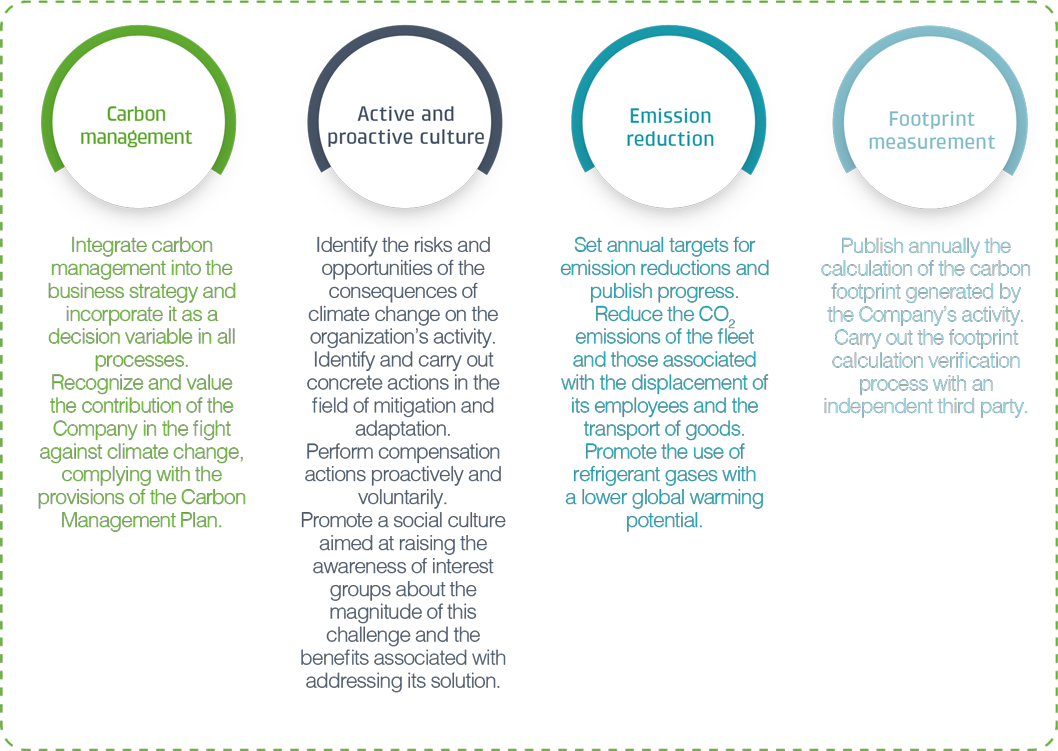
These initiatives were included in the ESG Master Plan, where one of the actions planned for 2021 was implementing the corresponding initiatives to minimise and mitigate the company's impact on climate change, including monitoring and controlling fossil fuel and electricity consumption,calculating the carbon footprint (scopes 1, 2 and 3), establishing reduction targets in this regard aligned with the Science Based Targets initiative (SBTi), and implementing the relevant actions to achieve them.
With regard to noise and light pollution, Cellnex's activity does not generate a significant impact. Nevertheless, Cellnex takes these impacts into consideration and strives to minimise them.
The Greenhouse Gas (GHG) emissions inventory is a key instrument for understanding the global dimension of the impact of the Company's activity on climate change, as well as the development of GHG emissions over time and Cellnex's value chain. As such this year, Cellnex has once again calculated and certified, through an independent external body, Scope 1, 2 and 3 of the Carbon Footprint following the ISO 14064-1:2018 standard, as well as on the criteria of the GHG Protocol, for all countries and at the corporate level. Additionally, in 2021 internal audits related to the carbon footprint were conducted in five countries (France, Portugal, Ireland, Spain and the United Kingdom).
Emissions have also been reported and verified since 2021 with the classification established by the Corporate Accounting and Reporting Standard of the Greenhouse Gas Protocol (GHG Protocol), developed by the World Business Council for Sustainable Development. In the case of Scope 3 emissions, the classification set out in the GHG Protocol publication "Corporate Value Chain Accounting and Reporting Standard (Scope 3)" is used.
According to the verification, the verified emissions inventory for 2021 is 681,644 tonnes of CO2e with the market focus (782,421 tonnes of CO2e in 2020). The decrease in scope 2 emissions is due to the implementation of the actions defined in the Energy Transition Plan.
|
EMISSIONS FROM THE GHG PROTOCOL (market-based) |
ISO 14064 GHG EMISSIONS (market based) |
||||
|
Category |
GHG emissions (t CO2e) |
% |
Category |
GHG emissions (t CO2e) |
% |
|
Scope 1: direct emissions |
3,494 |
1% |
C1. Direct GHG emissions and removals |
3,494 |
1% |
|
Scope 2: indirect emissions |
328,720 |
48% |
C2. Indirect GHG emissions from imported energy (market) |
328,720 |
48% |
|
Scope 3: other indirect emissions |
349,431 |
51% |
C3. Indirect GHG emissions from transport |
2,760 |
0.4% |
|
C4. Indirect GHG emissions from products used by the organisation. |
218,390 |
32% |
|||
|
C5. Indirect GHG emissions associated with the use of the organisation's products |
128,282 |
19% |
|||
|
Total |
681,646 |
100,00% |
Total |
681,646 |
100,00% |
Following the ISO 14064, with the market-based approach 48.22% of the GHG emissions inventory corresponds to category C2 “indirect emissions from imported energy”, followed by category C4 “indirect GHG emissions from products used by the organization” with 32.04% of the total GHG emissions. C5 category “indirect GHG emissions associated with the use of products from the organization” represents the 18.82% of the total. C1 and C3 categories only contribute an 0.51% and 0.40% respectively.
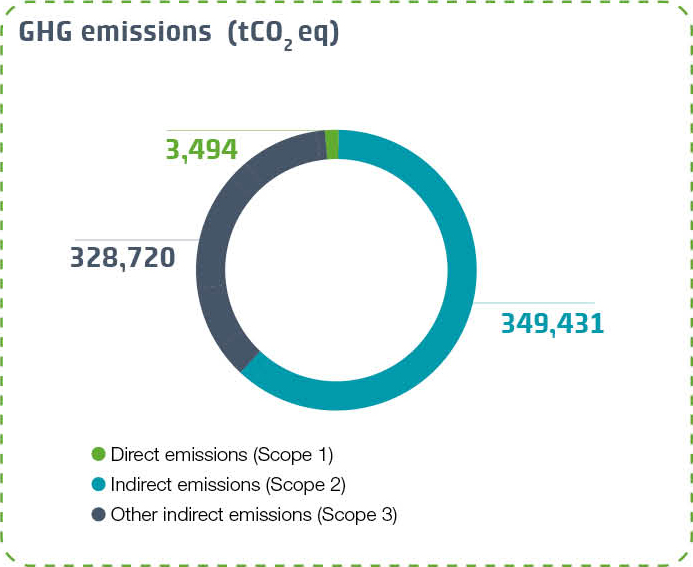
Following the GHG protocol, 51% of the emissions corresponds to Scope 3, followed by Scope 2 with 48% and Scope 1 with less than 1% of the GHG emissions.
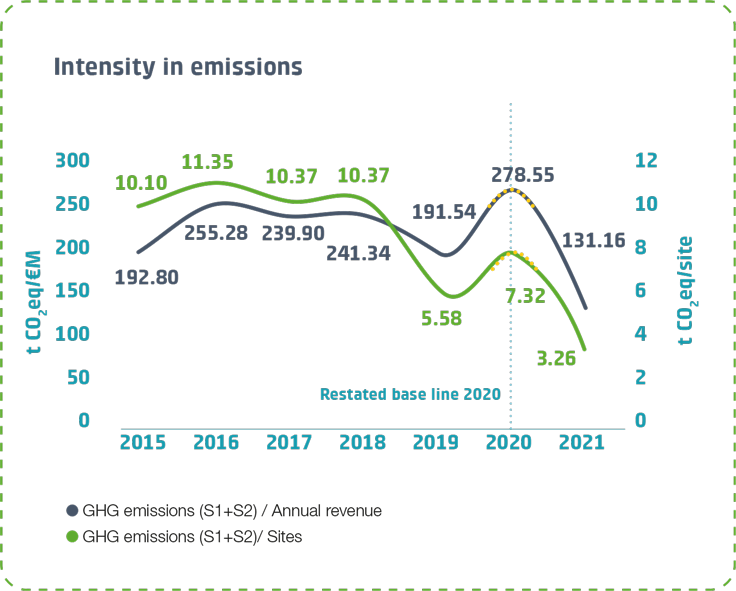
Cellnex's Scopes 1+2 intensities have been reduced mainly due to the efforts made within the Energy Transition Plan. Regarding the evolution of emissions intensity it should be noted that the emissions for the base year 2020 have been recalculated, Further information explained in Chapter 7.3. Carbon footprint: Scope and calculation methodology.
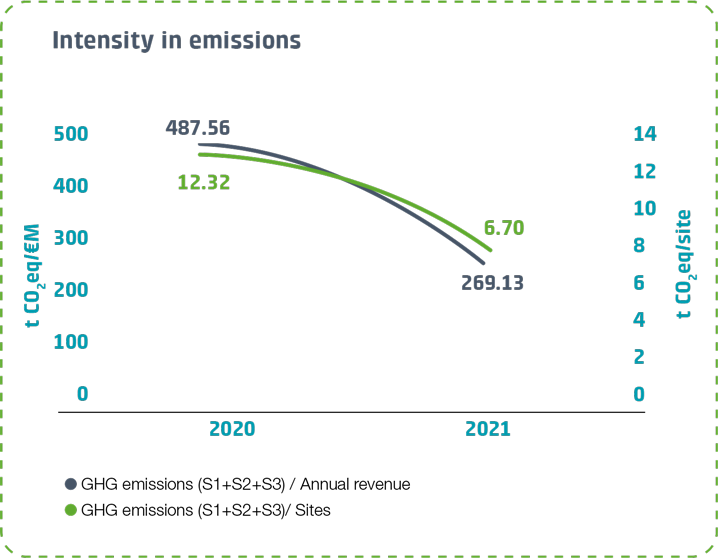
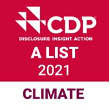
As part of its efforts to manage greenhouse gas emissions, in 2021 Cellnex offset 3,494 tons of CO2 from scope 1 (2,850 tons in 2020) by acquiring 3,494 CER credits (certified emission reductions) (2,850 CER credits in 2020) in the market Wind Energy Project in Tirunelveli and Coimbatore (India) according to CDM (Clean Development Mechanism), to achieve neutrality in emissions with carbon footprint of Scope 1 of all countries. The project consists of a package of 250 wind turbines for a total installed capacity of 56.25 MW.
The results obtained in the GHG emissions inventory are also useful for meeting to the various sustainability indexes in which the organisation participates, such as FTSE4GOOD, CDP, Sustainalytics and "Standard Ethics".
In 2021 it is worth noting that Cellnex was recognised for its commitment to sustainability and combating climate change by CDP, which manages a global disclosure system for investors, companies, cities, states and regions to measure their environmental impact and secured a place on its prestigious 'A List'.
Science-based targets is an initiative of CDP (formerly Carbon Disclosure Project), the United Nations Global Compact, the World Resources Institute (WRI) and the World Wildlife Fund (WWF), of which more than 2,000 companies are members worldwide. Its objective is to increase the commitment of companies to sustainable management, and the search for more ambitious solutions to climate change.
This initiative, aligned with the Paris Agreement, aims to help establish science-based climate change strategies to reduce greenhouse gas emissions. As such it aims to limit global warming to well below 2°C above pre-industrial levels and to continue efforts to limit warming to 1.5°C.
In this regard, in 2019 Cellnex committed to developing a science-based emissions reduction target and in 2021 the Company strengthens its commitment to combating climate change by establishing specific targets and milestones for emissions reduction validated by the Science Based Targets initiative (SBTi) aligned with a 1.5ºC stage and with the Net Zero targets of the Paris Agreement that provide for carbon neutrality by 2050.
Therefore, Cellnex is committed to:
To achieve these objectives, on the one hand, Cellnex has adopted an Energy Transition Plan whereby the company's electricity supply will be 100% renewable by 2025. On the other hand, commitment actions are planned with suppliers to achieve the planned emissions reductions in the supply chain.
The transition towards a low-carbon economy is one of the lines of action of the company's Strategic Sustainability Plan, as well as the ESG Master Plan. Both plans aim, among other objectives, to mitigate the impact that the company's activity may have on climate change.
The internal carbon price is a financial tool to reflect the social, environmental, and economic costs of climate change in terms of greenhouse gas emissions generated by the consumption of energy and materials needed for an organisation's daily activities.
Its analysis can add value to investments that reduce social, environmental, and economic costs, thus generating incentives for innovation in low-carbon companies. It also helps to anticipate policies that may affect a company's operations or supply chain. and meet ambitious emission reduction targets.
With internal carbon pricing it is possible to translate the business impact on climate change into financial terms, which helps to translate carbon into relevant terms for the company and strengthen internal commitment, thereby responding to the demands of investors and customers, and improving Cellnex's positioning in terms of climate change.
In this regard, during 2021, a study of possible Internal Carbon Pricing (ICP) options for Cellnex was carried out, resulting in a first preliminary proposal for an Internal Carbon Rate. As a continuation of the project, at the end of 2021, a pilot application of this internal rate was initiated, which will be developed during 2022.
Before starting...
We use our own and third-party cookies for analytical purposes and to show you personalized advertising based on a profile prepared from your browsing habits (for example, pages visited). Click HERE for more information. You can accept all cookies by pressing the "Accept" button or configure or reject their use by pressing the "Configure" button.
ACCEPT AND CONTINUE Configure cookies